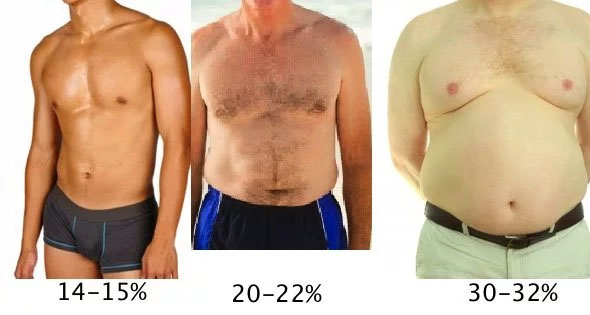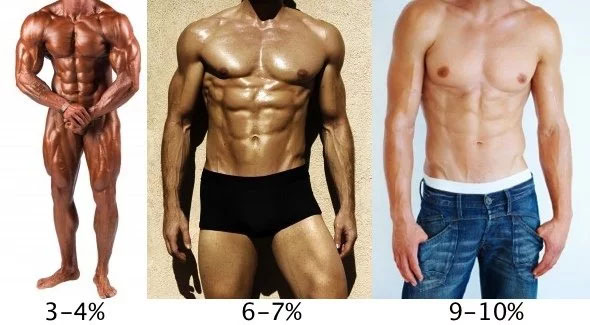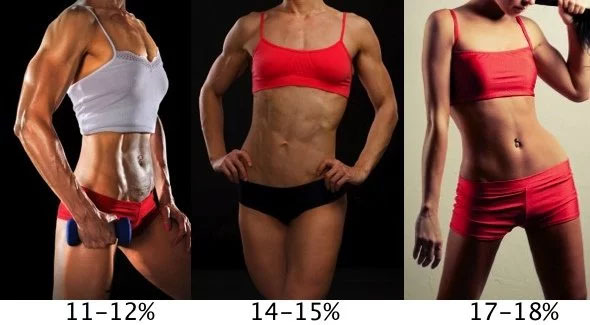Two Meal Muscle
The rules.
From a dietary standpoint, building muscle is similar to losing fat. The difference is a matter of quantity more than anything else thanks to muscle’s financial burden.
Building muscle makes you a bigger creature. Bigger creatures require more energy. Because of this, muscle growth tends to require financial stability. If you’re starving to death, unable to pay for even your basic survival functions, your body won’t feel comfortable making bigger muscles and increasing its energy needs.
Your body needs to know it will be able to support the higher cost of living associated with bigger muscles, which carries two big implications:
First, you need enough proteins. One gram of protein for every pound you weigh is still the gold standard, although eating more proteins won’t hurt. You can extend up to two grams of protein for every pound you weigh if you have the means, but this isn’t a necessity.
Second, you also need enough energy. Most people knowingly eat more than what their bodies need, to foster a sense of financial security. This is smart if you want to ensure muscle growth, but it comes with a downside: fat gain.
Consuming more energy than what your body needs is how you get fat. Your body takes the “leftover” energy and stores it for later use.
Meticulous Method.
To avoid fat gain, many people try to gain muscle using what I refer to as the Meticulous Method, which is to say: finding a perfect calorie intake — one that’s high enough to convince the body it’s not starving, and one that’s low enough to avoid excess fat gain. This usually ends up being maintenance calorie intake (or slightly above).
Although the Meticulous Method can work, there are a few problems.
First, there’s a difference between giving your body plenty of calories versus giving your body just enough calories. You’d feel much safer buying a Hummer if you had plenty of money to cover the cost as compared to having just enough money to cover the cost.
Second, and more importantly, muscle growth is a slow process. For someone that’s been strength training for a decent amount of time, the average rate of muscle growth is around one pound per month. (If you’re a noob, you might be able to gain quicker. If you’re a vet, you will gain slower.)
One pound of muscle spread across your entire body isn’t very visible. To boot, scale weight can fluctuate by pounds on a daily basis. So here’s the question: When you’re using the Meticulous Method, how do you know if you’re building muscle?
You don’t.
You guess an intake. You say, This is my perfect calorie intake. And then, you give it a go. One month later, your scale weight is similar to what it has always been. You don’t look different in the mirror. Two months later, same. Three months later, maybe, just maybe, you’re able to see the results of your hard work.
But what if you don’t?
What if you WEREN’T eating enough? What if you DIDN’T gain any muscle? How would it feel to have “wasted” three months? And then what would you do? Increase your calories and try again? Risk wasting another three months?
Don’t get me wrong… if you’re trying to find a perfect calorie intake, there are some signs you’re in the right neighborhood. If you’re dropping body fat, you’re eating too little. If you’re getting visibly fat, you’re eating too much. If you’re…
Probably.
You never really know if you’re eating enough, which is why the Meticulous Method is best reserved for those that’ve acquired a respectable level of apathy, like myself. There are times when I don’t really care about “optimizing” for muscle growth. I know it’s going to take me a while to build muscle and I trust my program. I’m not obsessive.
Meticulous Method: specifics.
At this point, I feel like showing you how this plays out in my life is a diss on your intelligence, but, whatever…
Symbolically, this was fat loss:
BWx12:
🥩🥩🥩🥩🥩🥩🥩🥩🥩🥩
⚡⚡⚡⚡⚡⚡⚡⚡⚡⚡
♾️🥦
For maintenance, the only variable that changes is energy; I eat more energy. Instead of BWx12, we can use BWx14 to get an estimated calorie intake. For me, at 205 pounds, this equals 2870 calories. Playing the same game as before:
- Proteins: 4 cals / gram
- Protein intake: 205 grams
- Proteins energy yield: 205×4 = 820 calories
- Maintenance intake: 205×14= 2870 calories
- Energy allotment = 2870-820= 2050 calories
Just as before, I’m going to say my non-starchy carb intake will take up at least 1/3 of my total energy intake.
2050x.66= 1353 calories
I get three (or four) more lightning bolts!
BWx14:
🥩🥩🥩🥩🥩🥩🥩🥩🥩🥩
⚡⚡⚡⚡⚡⚡⚡⚡⚡⚡⚡⚡⚡⚡
♾️🥦
In real life, this means I’ll be less picky at dinner. I’ll eat whatever kinds of proteins I want, and I’ll eat starchy-sugary carbs and fats during my dinner’s “main course” until I’m content. All around, I’ll be less concerned with what I eat, as long as I’m eating enough proteins and eating until I’m content (as opposed to stuffed), I’m good to go.
Classic Method.
If I wanted to guarantee muscle growth, I’d use a more aggressive clean bulking method, which is to say: I’d eat even more. Tiptoeing into the “fattening” areas of a calorie surplus is the only way to ensure you’re giving your body enough energy, although there is a point of diminishing returns.
At some point, more calories won’t expedite muscle growth, they’ll just make you fat. Otherwise said, twice as many calories won’t yield twice as much muscle. This is like fat loss, only flipped upside down. You want to eat more, but not too much more.
We’ll use a conservative calorie surplus for starters, which equates to eating around 500 calories above maintenance, which can be calculated with the following equation:
BW [POUNDS] x 16-18
CONSERVATIVE SURPLUS
SYMBOLIZED AS (+)
Since we just did the calculation for maintenance, we will simply add 500 calories worth of energy onto our tabulation, remembering that one ⚡ represents 100 calories worth of energy.
BWx16:
🥩🥩🥩🥩🥩🥩🥩🥩🥩🥩
⚡⚡⚡⚡⚡⚡⚡⚡⚡⚡
⚡⚡⚡⚡⚡⚡⚡⚡⚡
♾️🥦
Look at all of those lightning bolts!
This is the launchpad, however, as you’ll see, the results are what ultimately steer the ship.
Clean bulking basics.
If I string together conservative surplus days, I’d expect to get fat. Clean bulking is all about not getting fat. Something doesn’t add up.
Instead of using a conservative surplus on a daily basis, I try to game the system by using a surplus when I’m most likely to build muscle. And then, when I’m not as likely to build muscle, I use a calorie deficit to facilitate fat loss. At the very least, I try to not spam my body with nutrients and energy when they aren’t needed.
Otherwise said, I try to give my body what it needs to build muscle when it’s most apt to build muscle. Otherwise, I try my best to facilitate fat loss, in a way that’s not terribly muscularly invasive. This is an ambitious goal. I’m not saying this is what actually happens under the skin. It’s just the madness behind the method — the story I tell myself to help me sleep at night.
Surplus days.
If you strength train on a regular basis, you’ll be in some sort of “muscle-building mode” almost every day, so putting a discrete window on things feels a bit disingenuous. Nevertheless, the best time for a calorie surplus is when the energy and nutrients are most needed. It’s not a stretch to say this would be on the days you strength train.
We can get a bit more granular here. Your body is more receptive to nutrients and energy post-training. More specifically, your body is more receptive to starchy-sugary carbs after training. When you train, you deplete your muscle glycogen stores. Your body will use the incoming carbs to replenish what was lost.
It’s not a bad idea to eat a decent amount of your starchy-sugary carb allotment sometime after training. Not necessarily directly after training, or within a fabled thirty-minute window of opportunity. Just… after. Thanks to my two-meal structure and when I normally train, this happens automatically.
In a week.
I normally strength train 3-4 days per week. To keep things static, let’s just say I’m training four days per week, which means I start with 4 surplus days per week. (If you’re wondering what would happen if I trained daily, hang in there.)
- Sunday:
- Monday: 💪 (+)
- Tuesday:
- Wednesday: 💪 (+)
- Thursday:
- Friday: 💪 (+)
- Saturday: 💪 (+)
Opposite of surplus days are deficit days, and, for starters, I’ll start with conservative deficits.
- Sunday: (-)
- Monday: 💪 (+)
- Tuesday: (-)
- Wednesday: 💪 (+)
- Thursday: (-)
- Friday: 💪 (+)
- Saturday: 💪 (+)
The surplus days will foster muscle growth and result in some fat gain. And then, the surplus days will help combat the fat gain from the surplus days. End result is, you gain muscle while keeping your body fat under control… in theory.
I’m not dumb enough to say things work this precisely (and perfectly, for that matter). Even if they did, we’d run into the same problem we did with the Meticulous Method: lack of feedback. If you were gaining muscle and only muscle, you wouldn’t really be able to tell in a meaningful timeframe.
In order to ensure your body is existing within a favorable muscle-building environment, you need to flirt with fat gain. The key isn’t avoiding fat gain, but, rather, dealing with fat gain in a time-efficient manner. This is easiest to do when you’re somewhat solid.
Solid.
“Solid” is a physiological state defined primarily by body fat percentage, with six-pack-body-fat being solid’s gold standard. For males, this is around 10% body fat. For females, this is around 18% body fat.




You don’t need to be truly solid in order to clean bulk, but you’ll be a lot better off with some abdominal definition because losing abdominal definition is a valuable form of feedback. Whenever the grooves between my abs become flatter and softer, I know I’m gaining fat.
When a defined set of six-pack abs turns into a soft set of six-pack abs, I know I’m eating enough. When a soft set of six-pack abs turns into a four-pack of abs, I know I’m eating enough. When….
Not solid?
If you aren’t somewhat solid, clean bulking will be difficult. I don’t try to clean bulk unless I’m somewhat solid. I recommend getting lean if you aren’t lean enough, but if you’re gonna defy my recommendation, then you’ll have to rely on scale weight and only scale weight. This isn’t ideal.
With scale weight, you can’t tell whether the weight you’re gaining is fat or muscle. It’s VERY EASY to confuse fat gain for muscle gain when you’re at a higher body fat percentage. You can easily go from 17% body fat to 20% body fat without observable differences. So you might be gaining weight and thinking, HOLY SMOKES, LOOK AT ALL OF THIS MUSCLE I’M BUILDING! On the other hand, you will notice a jump to 13% body fat if you’re currently 10% body fat. So you’ll be able to say, HOLY SMOKES, ALL OF THIS WEIGHT I’M ADDING IS FAT, I’M JUST GETTING FAT AND NOT VERY MUSCULAR, I NEED TO ADJUST…
Alas, if all you have is scale weight, you have to deal with the limitations. Your landmarks: if you aren’t consistently one or two pounds heavier every month, you aren’t eating enough; if you’re consistently gaining more than one or two pounds every month, you’re eating too much.
Time.
Even though I’m trying to facilitate fat loss and stay lean, I need to flirt with fat gain to ensure I’m eating enough.If I’m not “losing” my leanness within the span of one month, I know I’m not eating enough; I know I need to bias more towards a calorie surplus.
To do this, I’d first turn one or two deficit days into either maintenance or surplus days. If I still don’t notice weight gain, then I’d eat more on my surplus days. I’d pause at five surplus days and, if needed, I’d go from BWx16 calories to BWx17 calories.
- Sunday: (-)
- Monday: 💪 (+)
- Tuesday: (+)
- Wednesday: 💪 (+)
- Thursday: (-)
- Friday: 💪 (+)
- Saturday: (+)
I prefer leaving some deficit days in the rotation because I’m crossing my fingers that they will facilitate some fat loss. Also, by keeping some deficit days in the rotation, they stay fresh. They don’t feel like a burden. If I ate at a constant surplus for a month, then I’d have a tough time switching to a constant deficit.
You don’t switching to a deficit to be difficult.
Here’s why:
Leaning back down.
Once I notice signs of fat gain, I simply bias my week towards more deficit days. The simplest way to handle business: make every day a deficit.
- Sunday: (-)
- Monday: 💪 (-)
- Tuesday: (-)
- Wednesday: 💪 (-)
- Thursday: (-)
- Friday: 💪 (-)
- Saturday: 💪 (-)
I know a daily deficit would yield fat loss, but I like keeping one or two surplus days in the rotation IF POSSIBLE because I’m operating under the assumption that surplus days are more muscularly favorable. At least, I’ll keep one or two maintenance days into the rotation.
When I’m sprinkling surplus days into the weekly rotation, I know I’ll have to use some fast(er) fat loss strategies in order to balance the scale. Ultimately, how any given week shakes out depends on how my body responds. Here’s a hypothetical week, just to show you what I’m talking about:
- Sunday: (-)
- Monday: 💪 (+)
- Tuesday: (-)
- Wednesday: 💪 (-)
- Thursday: (-)
- Friday: 💪 (+)
- Saturday: 💪 (-)
Two or three of the deficit days would be fast fast-loss days. If I don’t feel like “suffering” through fast fat-loss days and I wanted to eat more on a regular basis, then I’d switch the surplus days to maintenance days.
Back again.
Once I return to my solid base, I’m back where I started. I need to bias things in the muscular direction once again, the same way I originally did, by adding more surplus days into the rotation. This is very much a “high tide” and “low tide” approach, shifting back and forth between eating more calories and fewer calories, in order to keep my body fat under control.
The “tides” are dictated by time. I try to be within one month of my solid base at all times. Meaning, I’ll never steer the ship in the bulk direction so hard that it’ll take me more than one month to return. This way, I stay relatively lean all year.
Back again.
My clean bulking approach isn’t set in stone. If I trained daily, I’d probably take a more straightforward approach, which is to stay: I’d spend one month eating at a surplus almost daily, doing more training, or, at the least, more muscle-building sort of training. Afterward, I’d spend a month eating at a deficit almost daily, perhaps doing less training, or doing more strength-building sort of training.
This would be similar to a “traditional” bulk-and-cut strategy, just rotating between each cycle on a smaller timetable in order to stay trim. (Bodybuilders usually spend, at minimum, a few months in each cycle.)
You can try a straightforward approach even if you don’t train daily. I prefer a more chaotic approach because there’s a fine line between knowing when your solid base is honestly slipping and having a general bloated feeling on account of consistent surplus days. Short-term puffiness and bloating on account of surplus days is MOSTLY a result of fluid retention, which is a byproduct of a higher carbohydrate intake. Carbs make your body retain water.
Mixing deficit days into the “bulk” helps clear bloat and puffiness, which gives me a more honest evaluation of my physique more often, which will better guide me.
Regardless, the zoomed-out clean-bulking strategy remains the same: bias towards surplus days until you notice some fat gain, then bias towards deficit days until you’ve lost the added fat, then bias towards surplus days…